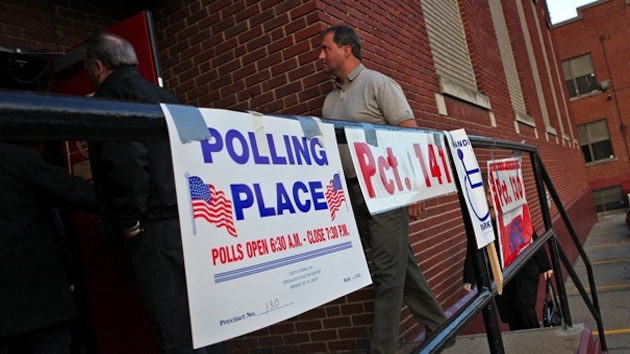

Now that the media noise has died down a bit, I thought it would be a great time to address the number one question I’ve received from readers digesting the results of the 2014 midterm elections. Did the Republican Party really win in a historic wave election, or was it simply that Democratic voters stayed home and a low turnout election doomed the party.
“The abysmally low turnout in last week’s midterm elections — the lowest in more than seven decades — was bad for Democrats,” The New York Times erroneously wrote. They went on to note that turnout in the 2014 midterm elections was “the worst turnout in 72 years” and “even worse for Democracy,” implying of course, the results were bad for the country.
Democrats, unsurprisingly, latched on to this and other misleading articles to argue that low turnout, particularly among their constituencies, was the real reason they were demolished at the ballot box in 2014. Unfortunately for the Democratic Party, as I discussed on The Don Smith Show during one of my post-Election Day interviews, the argument is — well — just not true.
While national turnout was 36.3 percent, beating only the election of 1942 that saw a participation rate of 33.9 percent, those numbers are grossly misleading and do not tell the whole tale, at all.
First, with the exception of Virginia, turnout in states with competitive Senate and high-stakes governor races was up from 2010, often way up. In those states, including Colorado, which was the scene of a very competitive Senate race between now Sen.-elect Cory Gardner and defeated incumbent Democrat Mark Udall, preliminary data show turnout was over 80 percent of the 2012 electorate (and it was still climbing at the time of writing). The electorate, turnout-wise, was roughly the same electorate that tossed Republican majorities in 2006, only it included higher shares of minority voters, demographics assumed to support Democrats.
The problem was that this time around they voted in higher numbers for Republicans than they had in the previous two elections, and whites — including white Democrats — have almost completely abandoned the party’s candidates. From Kentucky, where soon-to-be Majority Leader Mitch McConnell outperformed public polling in rural areas and the 5th Congressional District — a unionized former Democratic district — to Georgia, where David Perdue out-performed polls among black voters, Republican candidates simply outperformed the polls and the pundits.
If we apply the 2014 demographic margins in an electorate that mirrors 2012, exactly, then Cory Gardner’s margin of victory shrinks by less than a half of point. It is not an accident that I am using Colorado as a repeated reference. Among all the states with a competitive Senate race in 2014, it is the only state where the Hispanic share of the electorate is greater than the national average.
Speaking of nationwide, if we apply the same 2014 demographic margins in an electorate that mirrors 2012, exactly, then President Obama loses by a healthy electoral vote margin.
Even if we were to assume that 2014 truly was an across-the-board low turnout election, arriving at the simple conclusion that increased turnout would’ve translated into more Democratic voters is a false and inaccurate assumption. The Democrats made a similar false assumption in 2002, when turnout was just 37 percent and Republicans made relatively significant post-9/11 gains. In 2004, when turnout increased from 51.3 percent in 2000 to 55.3 percent, which was higher than the 53.6 percent turnout in 2012, they still lost.
While Democrats succeeded in getting their wish for more traditionally Democratic voters, the problem was that millions of their additional voters pulled the lever for George W. Bush, including a significant number of black voters.
If the 2016 Democratic nominee intends to put their head in the sand and repeat this same foolish mistake, then they are going to lose, plain and simple.
In 2004, there was no evidence to suggest these “missing” Democratic voters would’ve magically supported Democratic candidates, and there isn’t now in 2014. What little data we have now — post-Election Day — suggest quite the opposite.
For the first time in 3 years, the American people see the Republican Party in a more favorable light than the Democratic Party. According to exit polls, President Obama’s job approval was actually 3 points higher among the voting midterm electorate than the nationwide average of polls leading up to Election Day, 44 percent to 41 percent, respectively.
Are we to believe that if a substantial number of these voters voted in 2014 — a majority of which disapprove of the president even more — it would’ve increased Democrats’ support? Of course, the answer is no. We’ve tried to hammer into our readers over-and-over this cycle that the president’s job approval rating acts like an anchor on his party. If he is still deeply unpopular leading up to the 2016 presidential election, demographics will not save the party’s nominee.
“So, to everyone who voted, I want you to know that I hear you,” the president said at a press conference the day after Election Day. “To the two-thirds of voters who chose not to participate in the process yesterday, I hear you, too.”
From this statement, it’s pretty clear that the president hasn’t heard anything other than what his White House bubble lets him. D.C. Democrats really believe that they lost the 2014 midterms because they didn’t galvanize their base enough, thus, their plan is to move hard left in the hope they get more voters to the polls in 2016. Again, the problem with that plan — which includes the president’s unilateral action on immigration — is that they will isolate even more white voters.
And, as I wrote just a few short days before they got thumped, demographics alone with not save the Democratic Party.







